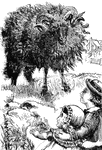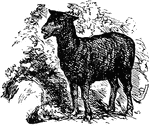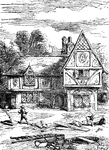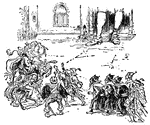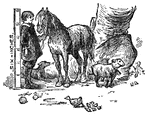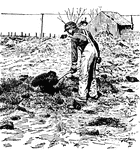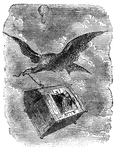
Burning of the White House
"Burning of the White House- the Federal troops, by command of General McClellan, abandoning their position…

First Minnesota Regiment
"Fort built around the officer's quarters of the First Minnesota Regiment, Colonel Sully, near Fair…

View of Grafton
"View of Grafton, West Virginia, occupied by the Federal Troops, under the command of General McClellan,…
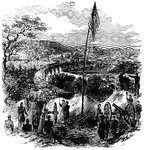
Bouquet Battery
"The Bouquet Battery, commanding the viaduct over the Patapsco River, on the Baltimore and Ohio Railroad,…

Ellsworth's Zouaves
"The departure of Colonel Ellsworth's Zouaves from New york, escorted by the fire department- the regiment…
Hilton Head
"Expedition to Port Royal- Government buildings erected on Hilton Head, S. C., by the Federal forces…

Battle of White Oak Swamp Bridge
"Battle of White Oak Swamp Bridge, Monday June 30th, 1862- Ayres's, Mott's and Randall's batteries checking…

Tommy Tittlemouse
Little Tommy Tittlemouse lived in a little house. He caught fishes in other men's ditches.
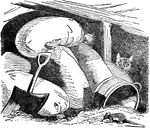
House that Jack Built—Rat
This is the Rat, that ate the malt, that lay in the house that Jack built.
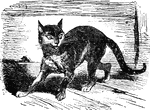
House that Jack Built—Cat
This is the Cat, that killed the Rat, that ate the malt, that lay in the house that Jack built.
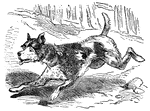
House that Jack Built—Dog
This is the Dog, that worried the Cat, that killed the Rat, that ate the malt, that lay in the house…

House that Jack Built—Cow
This is the Cow with the crumpled horn, that tossed the Dog, that worried the Cat, that killed the Rat,…
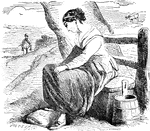
House that Jack Built—Maiden
This is the Maiden all forlorn, that milked the Cow with the crumpled horn, that tossed the Dog, that…
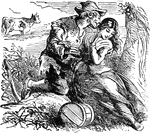
House that Jack Built—Man
This is the Man all tattered and torn, that kissed the Maiden all forlorn, that milked the Cow with…
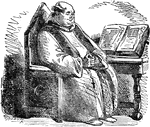
House that Jack Built—Priest
This is the Priest all shaven and shorn, that married the Man all tattered and torn, that kissed the…
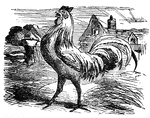
House that Jack Built—Cock
This is the Cock that crowed in the morn, that waked the Priest all shaven and shorn, that married the…
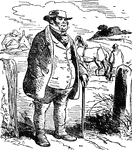
House that Jack Built—Farmer
This is the Farmer that sowed the corn, that kept the Cock that crowed in the morn, that waked the Priest…

Encampment of Colonel Max Weber's Rifle Regiment
"Encampment of Colonel Max Weber's German Turner Rifle Regiment, Twentieth New York Volunteers, at Hampton…
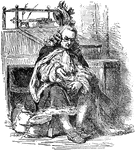
King in the Counting-House
Sing a Song of Sixpence. The king was in his counting-house, counting out his money.
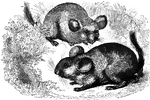
Chinchillas
"It is of a grayish color, and sufficiently long for spinning. The little animal which is produces it…

Battle of Chancellorsville
"Battle of Chancellorsville, Va., Friday, May 1st, 1863. We give a fine sketch of the point where the…

Siege of Vicksburg
"Siege of Vicksburg. Life in the trenches- bivouac of Leggett's Brigade- McPherson's Corps at the White…

Centreville
"View of the town of Centreville, Va., with the battlefield of Bull Run, Bull Run Mountains, Thoroughfare…

Harrison Mansion
"The old Harrison Mansion, Harrison's Landing, Va., the birthplace of President William Henry Harrison,…
Fort Moultrie
"Siege of Charleston, S. C. Bombardment of Fort Moultrie and Batteries Bee and Beauregard by the monitors…
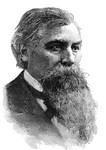
General Jeremiah M. Rusk
"General Rusk, born in Morgan County, Ohio, June 17th, 1830; died in 1894. He divided his time between…
!["The war in Virginia- contrabands coming into the Federal camp. The [African American] furnishes, in his various phases of existence, wonderful studies for the artist and philosopher. Never, perhaps, has a race seen such a moment as during the Civil War, when the chains of bondage were breaking from the limbs of 4,000,000 of men. The distant roar of battle was to them a sound of deliverance. With all the uncouth, odd and queer manifestations of joy they prepared to reach the camp of the delivering Yanks. Yoking together most incongruous teams before the farm wagons of their fled masters, with ass and ox and horse, with household gear queerly assorted, with useless truck and little that could rarely serve them, they started for the Promised Land, and might often have been seen coming in as our artist, a most close student of nature, depicted them, with his usual felicity of portraiture."— Frank Leslie, 1896](https://etc.usf.edu/clipart/11700/11752/contrabands_11752_mth.gif)
Contrabands
"The war in Virginia- contrabands coming into the Federal camp. The [African American] furnishes, in…

Battle of Spottsylvania
"The war in Virginia. Battle of Spottsylvania Courthouse- opening of the fight at Alsop's Farm, May…

Hooker's Battle
"The war in Tennessee. Hooker's Battle above the clouds, and capture of the Confederate position on…
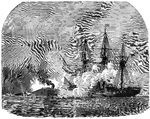
Mobile Harbor
"Farragut's naval victory in Mobile Harbor. The Hartford engaging the Confederate ram Tennessee.…
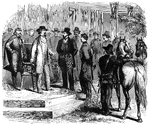
Siege of Vicksburg
"The siege of Vicksburg. General Grant meeting the Confederate General Pemberton at the Stone House,…
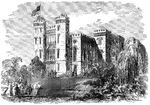
Banks's Expedition
"Banks's Expedition- Executive Officer Parker, of the United States gunboat Essex, hoisting…
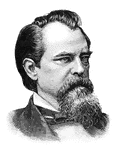
General J. B. Gordon
"General Gordon, born in Upson County, Ga., February 6th, 1832. He was educated at the University of…
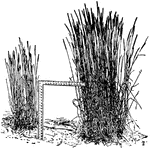
Pair of timothies
A pair of timothy plants growing side by side, illustrating the difference in yield. Each one grew from…
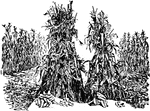
Ear-row Test
Yields of adjacent rows in an ear-row test, showing the difference in yielding power of two ears that…
Roller
A roller. Crushes clods and packs the surface so as to keep the seed moist at the expense of increased…

Wheat, potted and stunted
A wheat plant grown in a pot, stunted as a result of nitrogen deficiency in the soil.
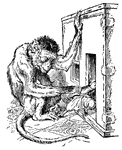
Monkey grabbing Gulliver
A monkey had ventured towards Gulliver's mini house. After discovering Gulliver, the monkey grabs him…

Manure Spreader
A manure spreader in operation. The manure was pitched from the stable to the spreader, handled only…

Buckwheat field
A farmer standing waist-deep in a field of buckwheat on land that was plowed early and well fitted.

Buckwheat field
Farmer standing in a sparse and stunted field of buckwheat, which was on land that was plowed late.
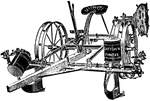
Check-Row Corn-Planter
A check-row corn-planter, which plants two rows at once and rows the corn both ways.

